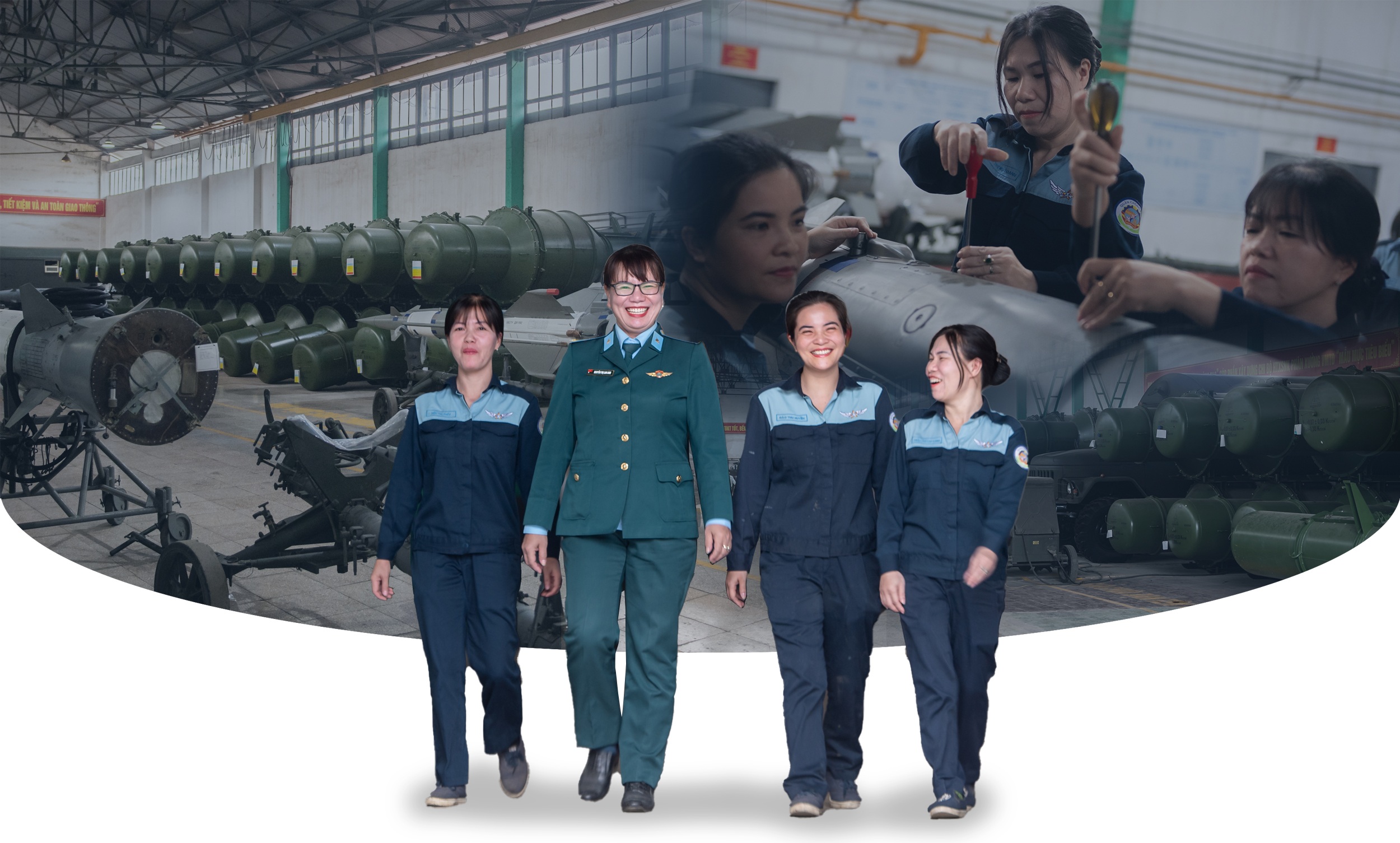

Workers are checking the missile before handing it over ( Video : Nguyen Ngoan, Tue Minh).
At 6:30 a.m., Ms. Tran Thi Kim Oanh (42 years old, from Chuong My, Hanoi ) arrived at Factory A31 of the Vietnam Air Defense - Air Force, starting her work day. This is where she repairs and assembles modern air defense missiles.
Factory A31 plays a key role in the repair, maintenance and upgrading of important air defense equipment.
Missile complexes such as Pechora S-125M and S-75 are brought here for inspection and restoration, ensuring combat readiness in all situations.
This place is considered the "last line hospital" for anti-aircraft missiles, where technicians have to face strict professional requirements, along with absolute meticulousness and caution in every operation.
Lieutenant Colonel Pham Thi Thu Huong, Political Director of Factory A31, said that each product here must go through many strict inspection and repair stages.
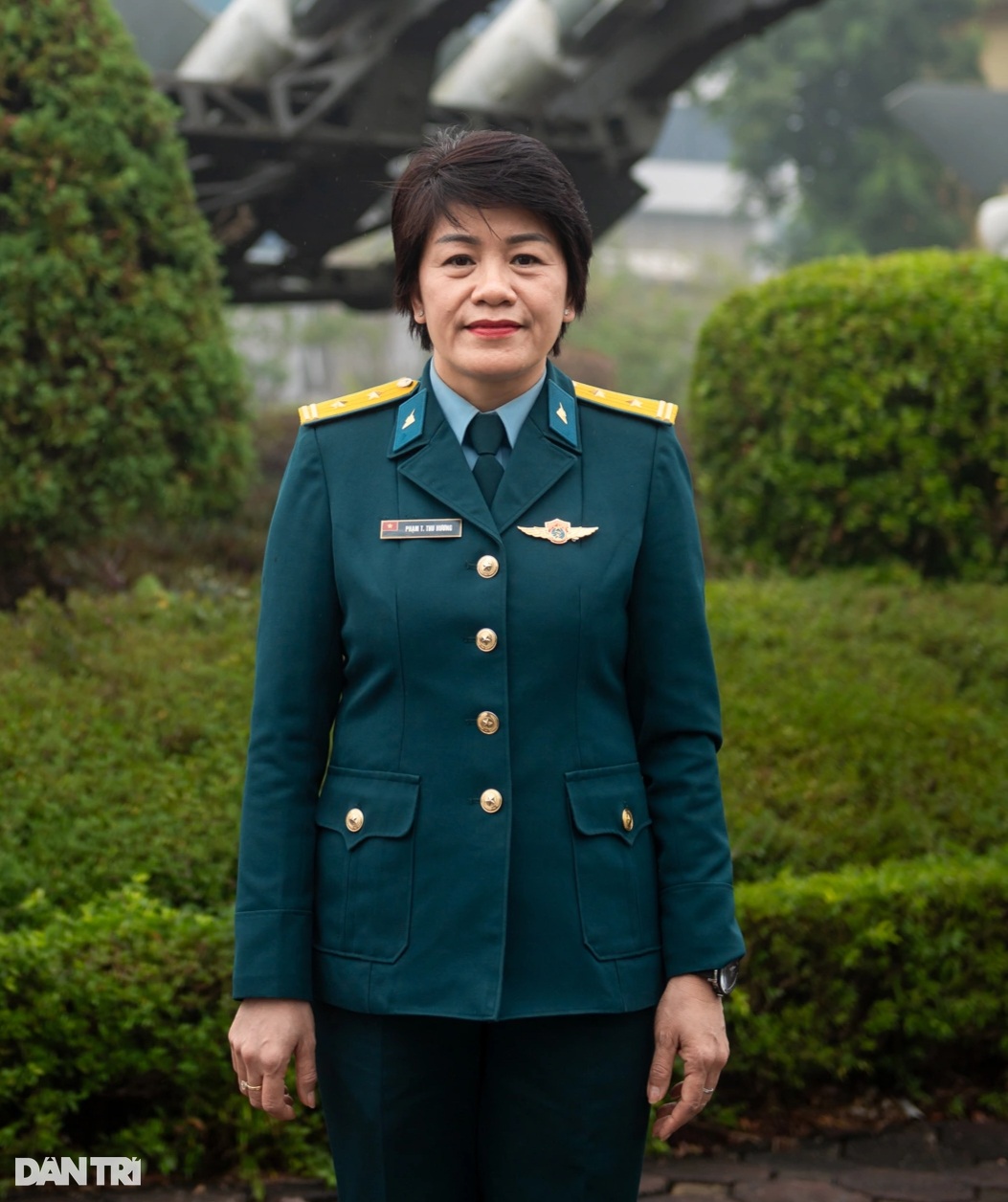
"We cannot afford to make mistakes. A small mistake during the repair process can seriously affect the combat capability and safety of the troops."
Lieutenant Colonel Pham Thi Thu Huong, Political Officer of Factory A31
To meet the increasing demand, Factory A31 has invested in modernizing its workshops, improving its capacity to produce technical materials and process advanced equipment. The team of engineers and technicians here constantly research and master modern technology, ensuring precise processing of complex mechanical and electronic components in the closed structure of missile complexes.
Repair of weapons, technical equipment and missile equipment is a challenging task, requiring the handling of complex structures, including many components such as vehicles, radios, launchers and ammunition. The system forms a unified block with tight integration of mechanical and electronic components.
In particular, the repair and assembly of electronic blocks - considered the "brain" and "connecting arms" of the equipment - plays a decisive role in the quality of the entire system.
To complete this task well, it requires dexterity, meticulousness and high precision, typical qualities that women often possess, contributing significantly to ensuring the quality and efficiency of missile repair and assembly work.

Among the hundreds of workers at the factory, there are 36 female workers directly involved in repairing and replacing missile components.
"Women play an important role in ensuring repair quality, and are always ready to coordinate with male colleagues to complete the task of protecting the Fatherland," said Lieutenant Colonel Huong.
Ms. Oanh is one of the factory's outstanding "steel roses". At the age of 42, she has 21 years of experience in repairing rockets. Every day, she and her teammates inspect and repair rockets such as the S125 and C75.
In the repair workshop, a Pechora missile sits on a launcher, waiting to be inspected after repairs to the steering gear. This is the type of ammunition used for the Pechora S125M and Pechora 2TM complexes, equipped with the Vietnamese air defense force.
Major Bui Truong Giang, Deputy Workshop Manager, said: "Technicians are re-checking the final parameters of the missile after repairing the severely damaged mechanical part. The Air Defense - Air Force Technical Department requires thorough repairs to ensure accuracy and efficiency when the missile operates."
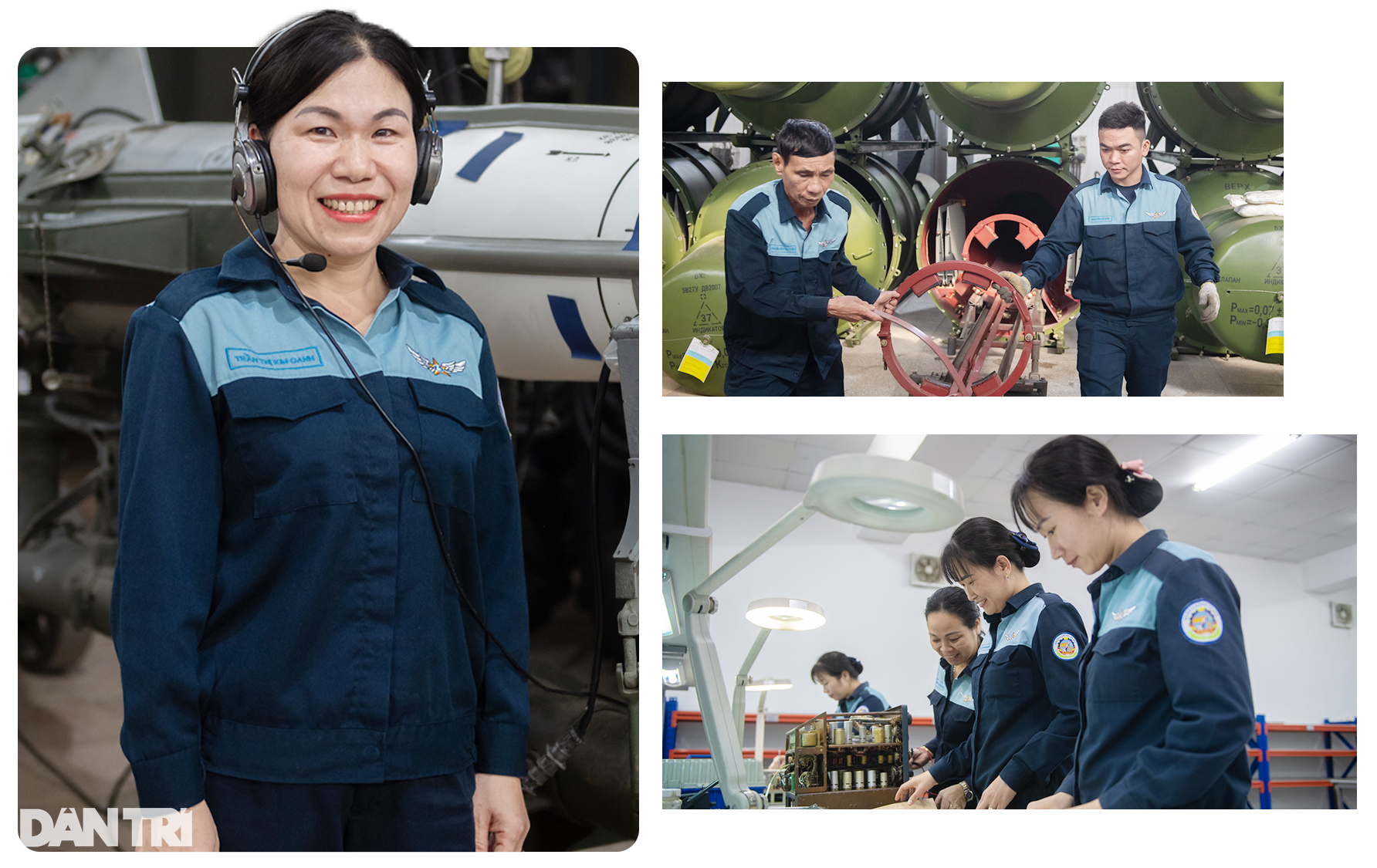
Wearing insulated gloves, Ms. Oanh and her colleagues pulled the bullet out of the warehouse and performed the disassembly and assembly. After completion, three people in the team moved the bullet to the inspection vehicle. Outside, Ms. Oanh, Ms. Huyen and a male colleague read out the parameters for those in the vehicle to check.
"The most difficult part of this job is the transmission part, because every small detail can affect the shooting results. There were times when the team had to disassemble and reassemble dozens of times to detect small errors that could have big consequences," Ms. Oanh shared.
After more than 5 minutes of reading the command, the parameters were adjusted accurately, and the missile completed the repair process. Ms. Oanh and her teammates were happy because they were on time to deliver the missile to serve the training needs to protect the sky of the Fatherland.
Her job not only requires professional skills but also meticulousness, carefulness and steely determination when working with live ammunition. Before starting work, female workers must tie their hair neatly, wear uniforms, wear gloves and use insulating mats.
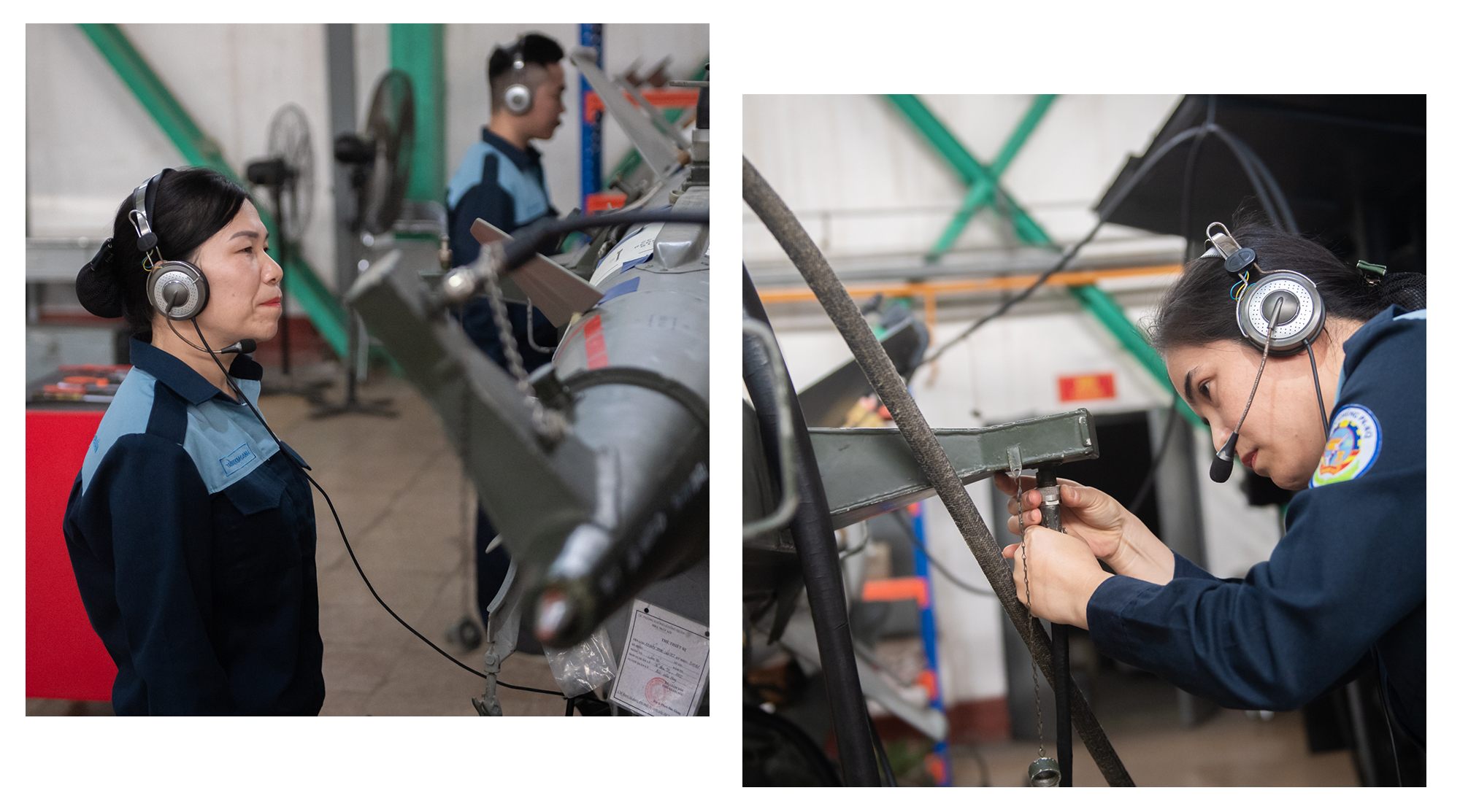
"A missile is like a complex living organism. Each part plays an important role in ensuring its effective operation. Even a small error can have serious consequences," said Ms. Oanh.
Ms. Oanh recalls the early days of her career, when she first practiced on a real rocket, the pressure was so great that she could not sleep. But thanks to the support from experienced colleagues, she gradually overcame it and became more and more proficient.
Once, during a working session with a Russian expert, the interpreter arrived late, and she had to use her hands and feet to communicate. "Luckily, everything went smoothly afterwards," she said with a smile.
For her, each successfully repaired missile is not only the result of her labor but also a source of pride in contributing to protecting the sky of the Fatherland. "The more we study missiles, the more proud we are of working in a field that is ranked among the four most difficult fields of science and technology. Factory A31 is currently one of two units responsible for repairing technical equipment for one of those fields," said Ms. Oanh.
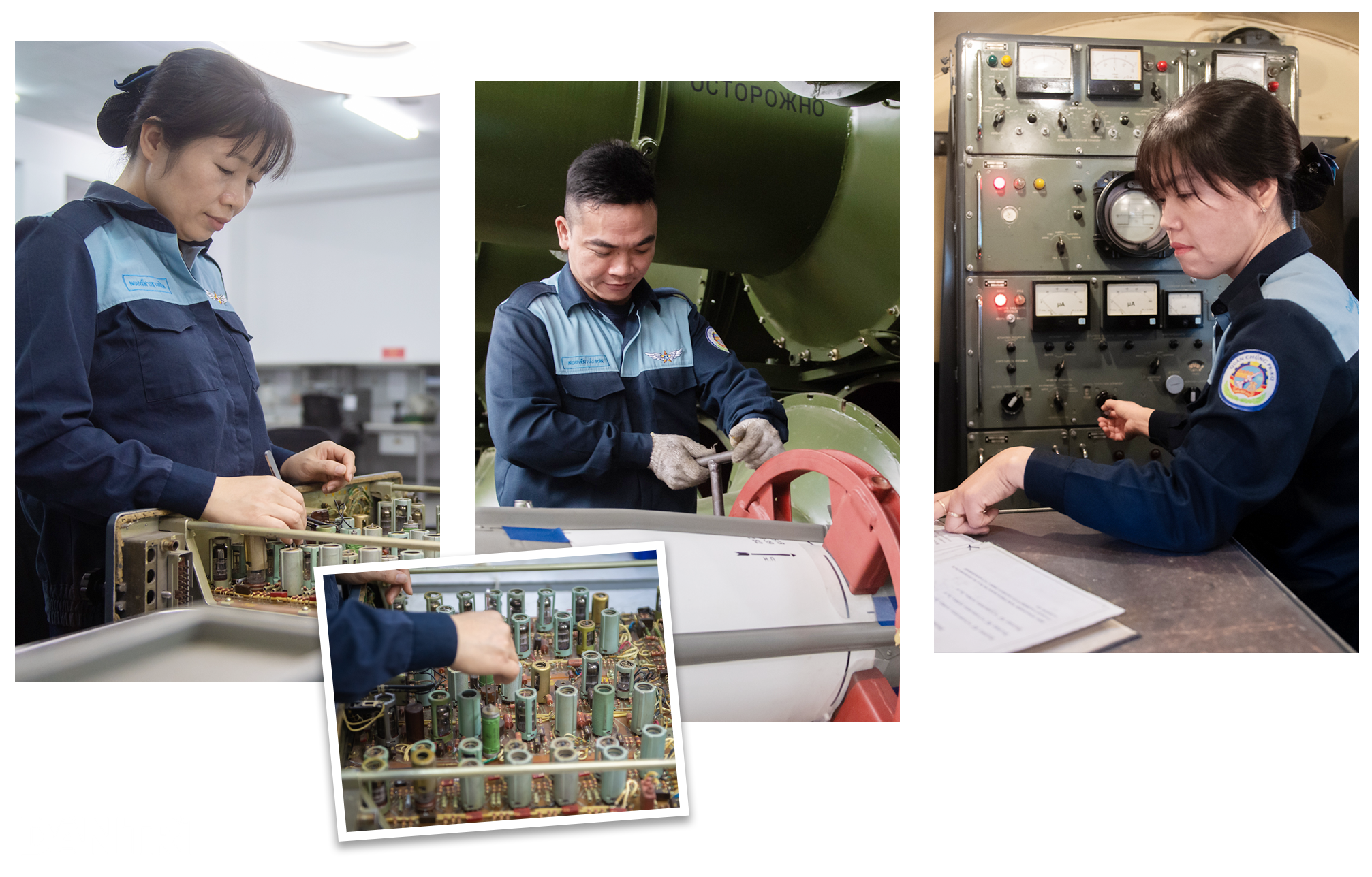

In the control station repair workshop, the working atmosphere is always tense as technicians continuously restore each detail of the Pechora S-125M and Vonga S-75M3 missile systems. Amidst the scattered components, the team of engineers work tirelessly to restore the precise operating mechanism of each part, like "doctors" examining and treating the missiles.
Ms. Trang Nhung and her colleagues in the assembly team focused on their work together, repairing a single block of the missile control station.
The desk lamp shines on the old assembly diagram, Ms. Nhung skillfully searches for each detail, flipping through each page of the diagram to identify the faulty part and choose the correct replacement material. "These diagrams are our 'treasures'. Without them, the job would be as difficult as finding a needle in a haystack among thousands of components," she said.
After identifying the error, she and her teammates focused on meticulously checking each weld and mechanical detail.
Even the smallest mistake can seriously affect the performance of the entire system. For slightly damaged single blocks, the repair time can be completed within 2-3 hours, but for severely damaged blocks, the job can take 7 to 10 days. Every day at work here is a challenge, but also an opportunity for technicians to demonstrate their absolute skills and care.
"After the repair is completed, the entire block is evaluated by the team leader, supervisor and quality control department. If it meets the requirements, the block is sent to the calibration team for a final check before being installed on the control station," Ms. Trang Nhung shared.
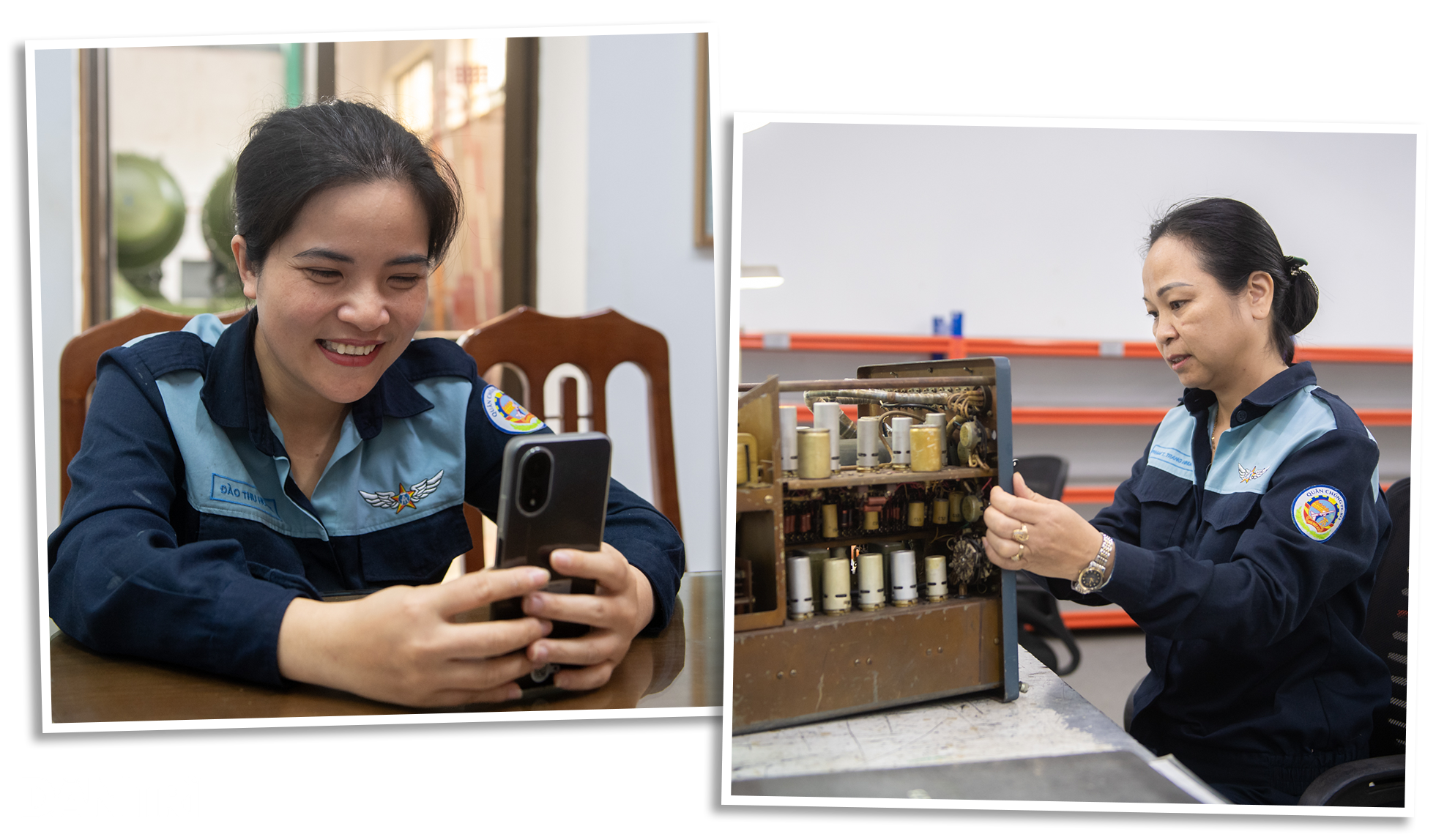
In addition to complying with regulations on etiquette, manners and neat dress, she and her colleagues also face time pressure. "There are times when the deadline is near and the work is not completed, we have to work all night or on weekends. The pressure is great, but everyone tries their best because of their responsibility to the job and the country," she confided.
Few people know that before becoming a technician, Ms. Nhung was an English teacher for 7 years. Becoming a teacher was her big dream since her school years.
However, in 2012, when the A31 factory was recruiting, she decided to change. This was a difficult decision, not only changing her career but also her life.
After being recruited, Ms. Trang Nhung underwent 18 months of training and 3 months of apprenticeship. Thanks to the dedicated guidance of experienced colleagues, she gradually became familiar with the work of repairing and assembling complex components, and from there, she has been attached to the factory for a long time.
"This job is completely different from teaching. Here, we have to concentrate and work meticulously on every detail. But thanks to the support of my supervisors and colleagues, I have overcome all difficulties and ensured work progress," she shared.

12 years working here is a memorable journey. From an apprentice, I have mastered my profession and completed all assigned tasks. That makes me proud to contribute to the development of the country.
Trang Nhung Factory A31
From a vibrant teaching environment , Ms. Nhung moved to a highly disciplined space at the factory - a major turning point in her life. The challenges at the factory not only helped her mature but also trained her to be serious and have a strong personality.
"12 years working here has been a memorable journey. From an apprentice, I have mastered my profession and completed all assigned tasks. That makes me proud to contribute to the development of the country," she confided.
Each workshop in the factory has its own level of difficulty, and the discipline of each industry is very high. Repairing mechanics, modules or missiles all require creativity, intelligence and quickness. The meticulousness and precision of female workers like Ms. Oanh and Ms. Nhung are key factors in determining product quality.
With the mission of maintaining the "health" of strategic weapons, Factory A31 has made great contributions to the protection of the Fatherland's airspace, affirming its important role in the national air defense system.
Content: Nguyen Ngoan, Tue Minh Photo: Thanh Dong Video: Nguyen Ngoan, Tue Minh Design: Nguyen Ngoan, Tue Minh
Dantri.com.vn



![[Photo] National conference to disseminate and implement Resolution No. 66-NQ/TW and Resolution No. 68-NQ/TW of the Politburo](https://vphoto.vietnam.vn/thumb/1200x675/vietnam/resource/IMAGE/2025/5/18/adf666b9303a4213998b395b05234b6a)
![[Photo] More than 17,000 candidates participate in the 2025 SPT Competency Assessment Test of Hanoi National University of Education](https://vphoto.vietnam.vn/thumb/1200x675/vietnam/resource/IMAGE/2025/5/17/e538d9a1636c407cbb211b314e6303fd)

![[Photo] General Secretary To Lam visits exhibition of achievements in private economic development](https://vphoto.vietnam.vn/thumb/1200x675/vietnam/resource/IMAGE/2025/5/18/1809dc545f214a86911fe2d2d0fde2e8)




















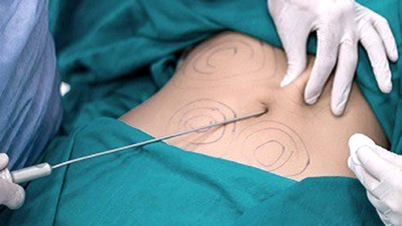
![[Photo] Prime Minister Pham Minh Chinh chairs meeting on science and technology development](https://vphoto.vietnam.vn/thumb/1200x675/vietnam/resource/IMAGE/2025/5/17/ae80dd74c384439789b12013c738a045)












































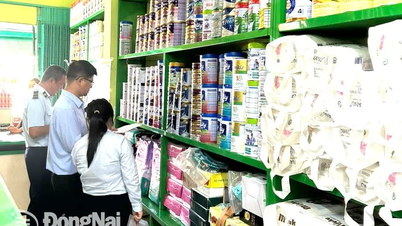













Comment (0)